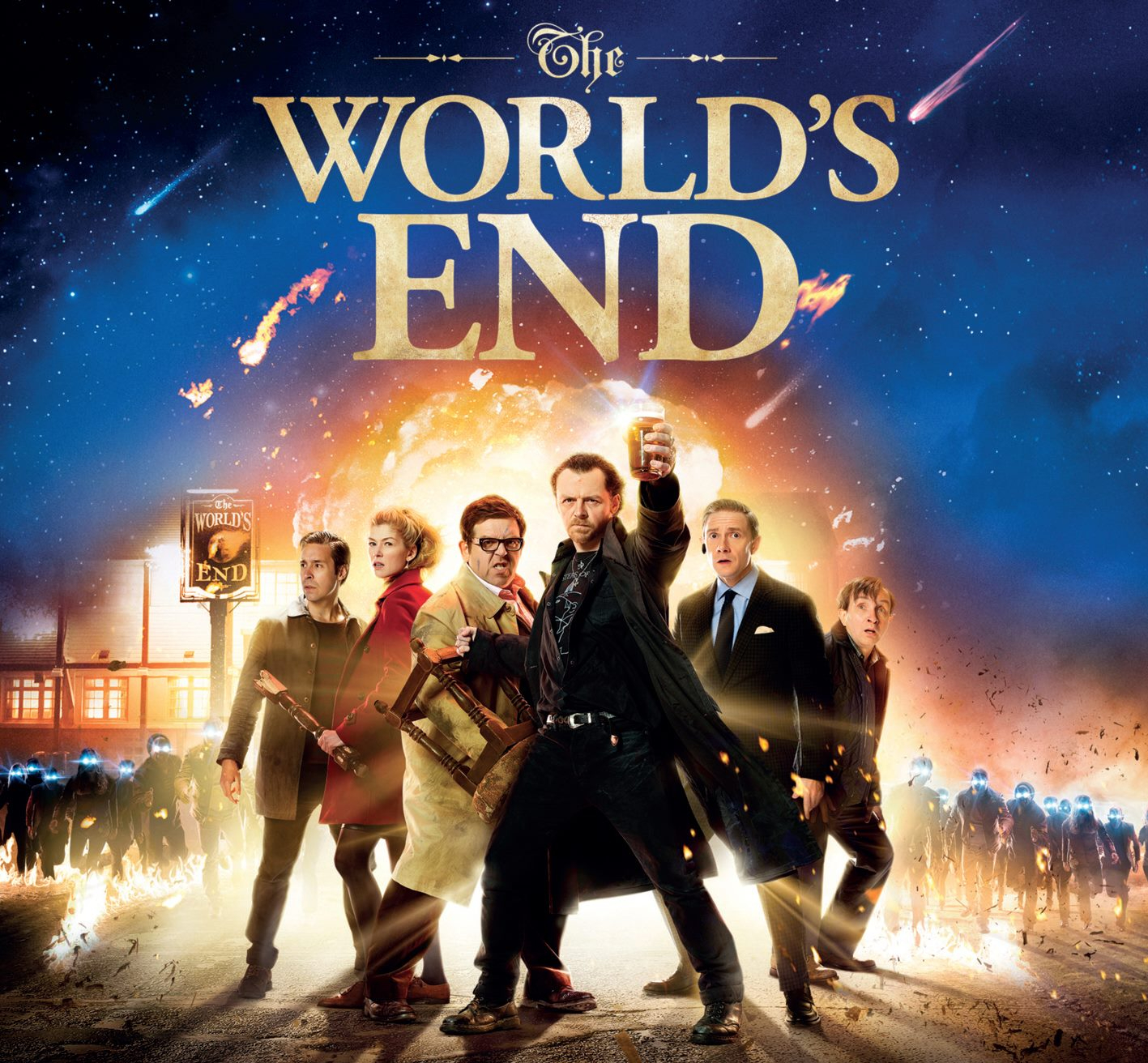
Film Critic Joel Bishton revisits Edgar Wright’s The World’s End, praising the film’s tightly plotted blend of comedy, drama and science fiction
I found my copy of The World’s End (2013) in a charity shop in Chichester. I have no idea why I picked up and bought it, but I did. It was my first encounter with the Cornetto Trilogy (2004’s Shaun of the Dead, 2007’s Hot Fuzz and The World’s End) of which Hot Fuzz is my favourite. However, this is not an article about that film. It is actually about The World’s End, which apparently divides people and is seen as a poor relation to the other two films. However, I would argue it is as good as, and in some ways better than the rest of the trilogy.
The World’s End is about Gary King (Simon Pegg, in a role that brilliantly combines comedy and tragedy) who meets up with his friends – Andy (Nick Frost), Oliver (Martin Freeman), Peter (Eddie Marsan) and Steven (Paddy Considine) – to finish a pub crawl they’d tried and failed when they were sixteen. However, when they return to their home town of Newton Haven, no one remembers them and they start to wonder: have they changed? Or has the town?
It is as good as, and in some ways better than the rest of the trilogy
The film, despite being a science fiction film and having obvious allusions to other films, is far less of a genre pastiche than the other Cornetto films. That may be because the alien invasion and replacement genre is essentially a sub-genre of horror and science fiction, with the key entries being The Thing (1982) and Invasion of the Body Snatchers (1956). It may also be that, more than any other film in the trilogy, it’s a grab bag of genres. It is partly a drama about alcoholism and growing up, partly a comedy with both intellectual (there is a reference to The Ship of Theseus thought experiment) and stupid (there is a gag with a fence that is a callback to the rest of the trilogy) and partly a science fiction film, complete with aliens, shooting stars and a plan to, well, not quite invade the Earth.
The fact that the film can support this is partly down to the brilliance of the screenplay, written, like the other two, by Pegg and director Edgar Wright. Everything in the film ties together, whether it is the similarities between the original pub crawl shown at the beginning of the film and the pub crawl that makes up the body of the film, the way the themes are threaded through the film or the way that the names of the pubs line up with what occurs in them. The film was partly written in order to tie up the themes accidentally put into the previous two films: individuals within a community and perpetual adolescence.

All this emphasis on theme makes it sound like a thesis, but that’s because I can’t just list jokes. There are so many good jokes that I could fill up the rest of this article by just quoting, but they all serve plot, character or theme, as well as being funny. This film is always what I’ll think of if someone talks about shots (“Shots! S! H! O! T! S! Shots!”) and ruins The Winter’s Tale by turning it into “let’s boo boo” (it has to be seen to believed). There are also the little details you pick up on a rewatch like the aforementioned Shakespeare display in Mr Shepherd’s (Pierce Brosnan, who has the misfortune of appearing in a film so good, he can’t even be discussed) classroom or the fact that comes out when the gang have to prove they are still human that Gary has injured all of his friends in awful ways when they were younger.
As much as the film is defined by Pegg and Wright’s screenplay, it’s absolutely an Edgar Wright film. It interestingly comes off his most stylistic film (2010’s Scott Pilgrim vs the World) and is his least stylistic film. There are absolutely still stylistic touches (you will never see a more dramatic beer pouring shot on film) but they are either in service of the action or lacking entirely.
You will never see a more dramatic beer pouring shot on film
Wright has also succeeded with the casting. Nick Frost plays the straight role so well, and Pegg is going so hard, that you don’t miss his comedy until it turns up as he gets drunker and drunker. All the cast convincingly play drunk (or as far as I can tell as a teetotaller), using what Pegg termed the “12 stages of drunkenness“, based on the number of pints (there are also twelve steps to the Alcoholics Anonymous process). Marsan is so good at playing the bullied, beta male that it makes you realise how wasted he has been playing Hollywood villains. Also, the fact that his demise is caused by him taking revenge on his bully, completing his arc again shows how tightly the film is plotted. Considine threads the line between being the rugged action hero of the film and breaking your heart through his love of Rosamund Pike’s Sam (one of the weaker links within the cast, with the film continuing the trilogy’s focus on male behaviour meaning that the female cast are often underdone in the films). Finally, Freeman completes the set of his roles in the trilogy with his biggest, but possibly not his best (I prefer his performance in Hot Fuzz as Angel’s sergeant). Wright also made the decision that anyone who’d appeared in the rest of the trilogy would reappear, meaning cameos for Julia Deakin, Rafe Spall and Bill Nighy.
In essence, I urge you to revisit this misunderstood entry into the trilogy. You’ll never look at a pint in the same way again.
Enjoyed this feature? Check out these other features from Redbrick Film:
Comments